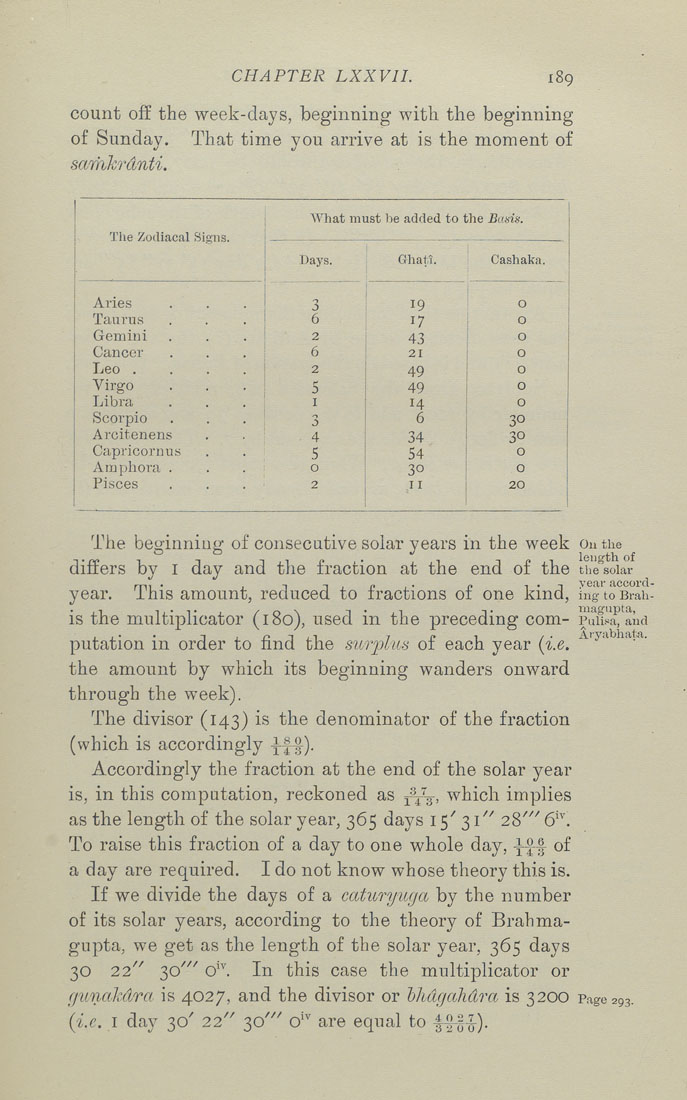Bīrūnī, Muḥammad ibn Aḥmad, Alberuni's India (v. 2)
(London : Kegan Paul, Trench, Trübner & Co., 1910.)
|
||
|
|
|
|
| Page 189 |

CHAPTER LXXVII. 189
count off the week-days, beginning with the beginning
of Sunday. That time you arrive at is the moment of
sctmkrdnti.
What must he added to the Basis.
The Zodiacal Signs.
Days.
3
(iliaiT. Cashaka.
Aries
i
19 0
Taurus
6
17 , 0
Gemini
2
43 0
Cancer
6
21 0
Leo .
2
49
0
Virgo
5
49
0
Libra
I
14
0
Scorpio
3
6
30
Arcitenens
4
34
30
Capricornus
5
54
0
Amphora .
0
30
0
Pisces
2
JI
20
The beginning of consecutive solar years in the week On the
differs by I day and the fraction at the end of the tiie"soiar
year. This amount, reduced to fractions of one kind, ing to Brah-
is the multiplicator (180), used in the preceding com- Pu&a, kiid
putation in order to find the surplus of each year (i.e. * ''^'^ ^^'"^'
the amount by which its beginning wanders onward
through the week).
The divisor (143) is the denominator of the fraction
(which is accordingly -rff)-
Accordingly the fraction at the end of the solar year
is, in this computation, reckoned as {^'^, which implies
as the length of the solar year, 365 days 15^31'^ 28''' 6"'.
To raise this fraction of a day to one whole day, iff of
a day are required. I do not know whose theory this is.
If we divide the days of a cctturyugct by the number
of its solar years, according to the theory of Brahma¬
gupta, we get as the length of the solar year, 365 days
30 22'^ 30''' 0'\ In this case the multiplicator or
gunakdrct is 4027, and the divisor or bhdgcthdra is 3200 Page 293.
(i.e. I day 30' 22" 30''^ o''' are equal to if-g-g-).
|
| Page 189 |







